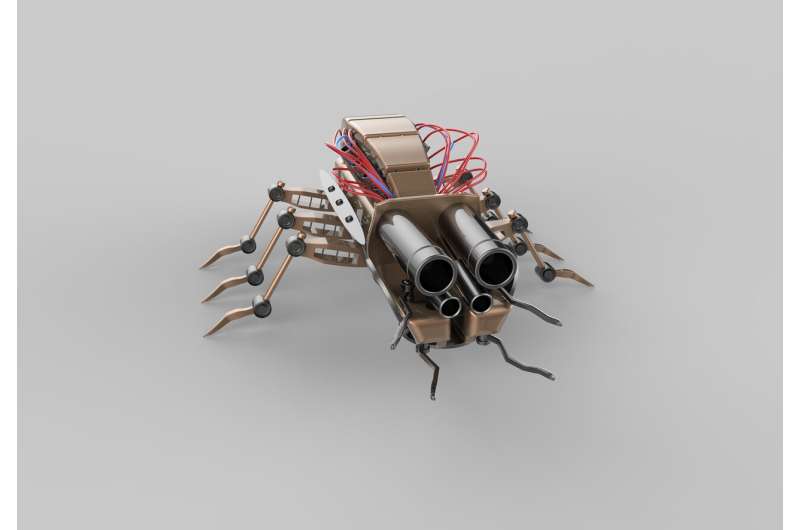Robots that mimic the natural world

Mosquitoes on Mars, metal birds flocking like pigeons and hoverflies with your lunch. Robots are copying nature.
The natural world is in constant battle with itself for food, sex and shelter. The losers starve or fall prey to predators, while the winners pass on genes that helped them thrive. Through natural selection, many species evolve powerful ways to navigate their environment. Engineers are learning nature's lessons to build strange new robots.
A current affair
Dr. Fangbao Tian and Dr. Brendan Burns are biotechnologists at the University of New South Wales. They look at the natural world to understand how animals fly and swim.
"Nature can teach us to make more efficient robots. These can be in kids' toys, delivery drones, to robots on other planets," says Fangbao.
"We're looking at nature and trying to catch up. There aren't many cases where we're doing better," says Brendan.
Fangbao looks at the structure of fish fins. Fish can quickly maneuver through water to avoid predators and obstacles. These reactions happen faster than a computer, and their bodies evolved to use less energy to swim.
Fish buoyancy is already used on ocean gliders. It lets them travel weeks without refueling.
Unflappable fliers
The pair also study insect and bird wings.
"Wings vary. A dragonfly's wings are fairly stiff, while something like a bee will have a mostly stiff wing with a flexible outboard," says Brendan.
The variation of wings lets these animals master unique flying styles. Fangbao and Brendan research which wings fit different robot jobs.
For instance, mosquito wings might work great on Mars.
Martian mosquitoes
Many insect wings rely on creating leading edge vortexes. These vortexes occur when a wing tilts against the air current while flying. This causes a sharp amount of lift, before the pressure beneath the wing changes.
These vortexes cause deadly airplane crashes, but insects found a way to use the vortexes to fly incredibly well. "If you flip your wing over the other way, you'll get another pulse of lift. Insects do this 200–1000 times a second. They get all the vortex benefits and none of the downsides," says Brendan.
Human forms of flight rely on large amounts of air pressure, but on Mars, the atmosphere is thin, making this flight difficult. Insect flight is too small to rely solely on air pressure, making it perfect for Mars. Engineers also look at winged drones for Earth.
Supercomputer simulation
To understand how fish, birds and insects move through air and water, Fangbao and Brendan take recordings, then build simulations using powerful supercomputers at WA's Pawsey Supercomputing Center.
"We could do this through experimentation, but there's ethics involved in that. It would require doing things like turning off parts of the fish's brain or cutting parts of an insect's wing," says Brendan.
"Instead, we're using artificial intelligence to watch how fish react to their environment. We can control the simulated environment to know what the fish see or feel, so we know what's important," says Fangbao.
It's still the early era of biomimicry, and researchers have a long way to go before robots can fully copy nature.
But one day, we could see aluminum mosquitoes flap their wings on Mars, while plastic hoverflies deliver our meals and divers swim alongside robotic fish.
The future of robotics might become a metal mirror to nature.
This article first appeared on Particle, a science news website based at Scitech, Perth, Australia. Read the original article.


















